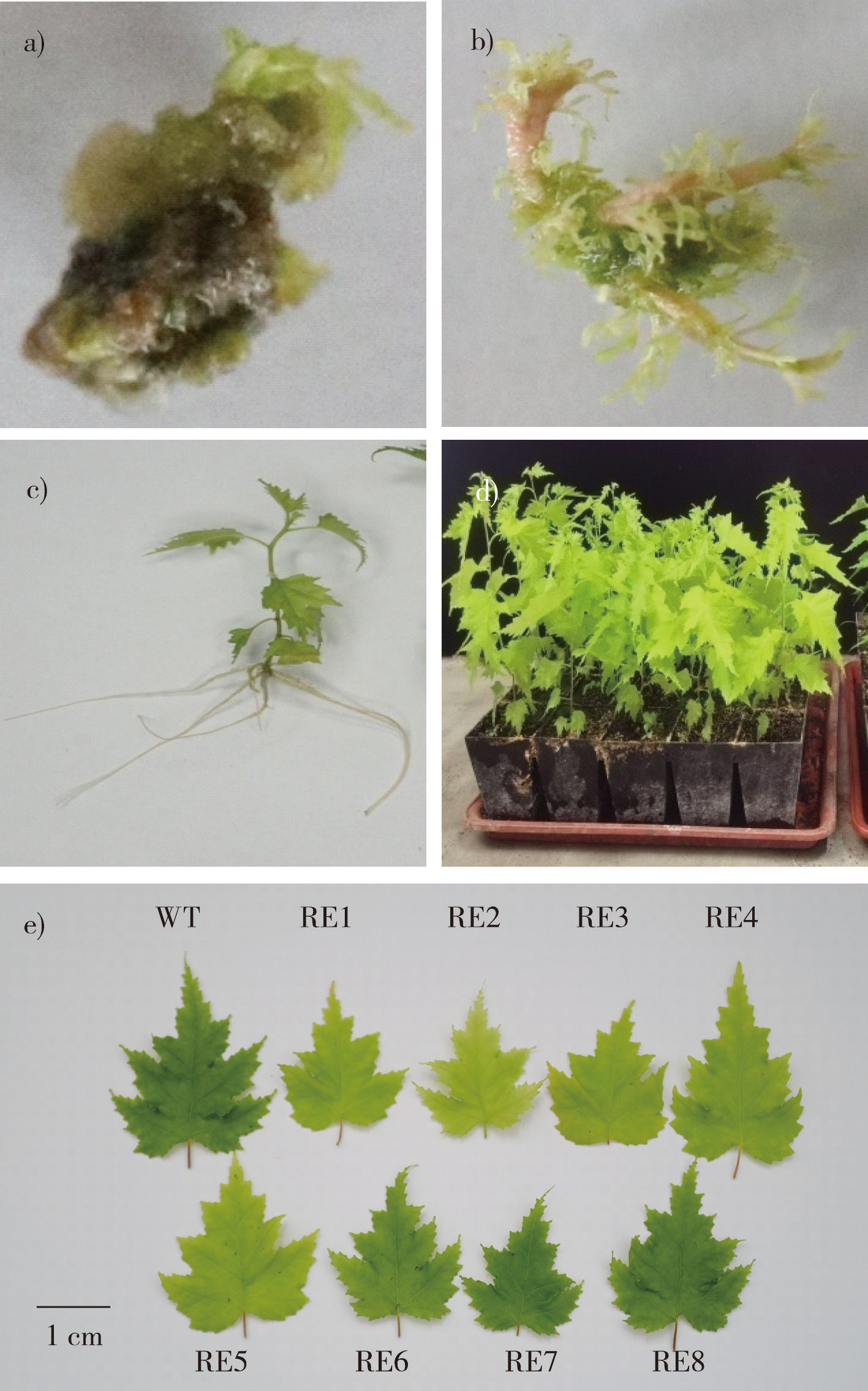【Objective】 Betula pendula ‘Dalecarlica’ is an European white birch species found in the northeast of China. After entering the reproductive growth stage, the pistil development is normal and can pollinate with other European white birch or white birch species to produce offspring; however, the stamens are aborted and cannot produce pollen. Because of the beautiful tree posture, clean white bark, and notable leaf edges with cracks, B. pendula ‘Dalecarlica’ has high ornamental value and is gradually being used in street greening to enrich plant species in urban landscaping. However, with improvements in the living standards of urban residents, diverse and colorful forms of greenery have become favored. Therefore, changing the leaf color of these tree species will enhance the application prospects in landscape architecture. The golden2-like (GLK) gene belongs to the GARP transcription factor superfamily of Myb transcription factors. GLK transcription factors are involved in regulating plant chloroplast development and hormone signaling, and play important roles in plant disease resistance, nutrient synthesis and leaf senescence, indicating that GLK transcription is the key gene for reforming plant leaf color. GLK transcription factors mainly regulate light capture and chlorophyll biosynthesis-related gene expression during plant chloroplast development as well as fruit skin color, thereby affecting chlorophyll synthesis and chloroplast development. Therefore, to cultivate colorful tree species for urban landscaping and scenery preferences, a molecular-based breeding method was used to create the golden leaf B. pendula ‘Dalecarlica’. 【Method】 B. pendula ‘Dalecarlica’ stem segments were used. The previously constructed 35S::BpGLK1-RNAi vector was introduced into the B. pendula ‘Dalecarlica’ genome via the agrobacterium method. DNA and RNA were extracted from wild type (WT) and resistant transgenic lines and were measured. The BpGLK1 interfering expression lines of B. pendula ‘Dalecarlica’ were expanded and transplanted. The leaf color, photosynthetic pigments, photosynthetic parameters, plant height growth, and gene expression characteristics of the BpGLK1 interfering expression lines of B. pendula ‘Dalecarlica’ were determined. 【Result】 Resistant calluses were obtained after co-cultivation on a selective medium for 30 days. The calluses were differentiated and cultured to obtain resistant adventitious buds, which were inoculated into a rooting medium. Adventitious roots were grown and transgenic B. pendula ‘Dalecarlica’ mutants were obtained. Eight herbicide-resistant regenerated transformation lines (RE1-RE8) were obtained following transplantation into the seedling trays. Using the total DNA of eight transgenic B. pendula ‘Dalecarlica’ leaves as templates and the pFGC5941-GLK1 plasmid as positive control, PCR amplification was performed on the forward target sequence and complementary sequence of the BpGLK1 gene, indicating that the interfering fragment of BpGLK1 gene and Bar gene have been integrated into the genome of the transgenic B. pendula ‘Dalecarlica’. The relative BpGLK1 expression in these transgenic lines was downregulated, with RE1-RE4 being the largest, whereas the RE6-RE8 decrease was relatively small. Among the eight transgenic lines, RE1-RE5 were yellow-leaf lines and RE6-RE8 were green-leaf lines. The leaf color parameters and relative chlorophyll content of 1-year-old transgenic lines were investigated in the transplanted fields, and the results indicated that compared with the WT and green-leaf lines RE6-RE8, the yellow-leaved strains RE1-RE5 showed significantly higher leaf color parameters L* and b* and lower chlorophyll a and b contents (P<0.05); however, the ratio of chlorophyll a to b exhibited an increasing trend. This result showed that low BpGLK1 expression significantly improved the leaf brightness of the transgenic lines. The Fv/Fm value of the transgenic strains was higher or significantly higher than that of the WT strain, with the yellow line RE2 having the highest Fv/Fm value, which was 1.39% higher than that of the WT strain. However, there was no significant difference in net photosynthetic rate (Pn) between transgenic lines and WT plants. Plant heights of the transgenic lines in the year of transplantation were surveyed. Plant height analysis showed that the four transgenic lines RE1, RE2, RE4 and RE6 were significantly higher than those in the WT, and there was no significant difference between the three transgenic lines RE3, RE5, RE7 and the WT. Only the height of line RE8 was significantly lower than that of WT. Based on RNA-seq, four genes, BpCOL, BpLCHⅡ, BpPDS, were significantly down-regulated. qRT-PCR analysis of these four genes indicated that they were significantly downregulated in RE1-RE3 expression. 【Conclusion】 The introduced GLK1 interfering target sequence reduced the BpGLK1 expression in transgenic B. pendula ‘Dalecarlica’. The obtained yellow-leaved B. pendula ‘Dalecarlica’ lines have potential applications in landscaping.
 PDF(2651 KB)
PDF(2651 KB)


 PDF(2651 KB)
PDF(2651 KB)
 PDF(2651 KB)
PDF(2651 KB)
